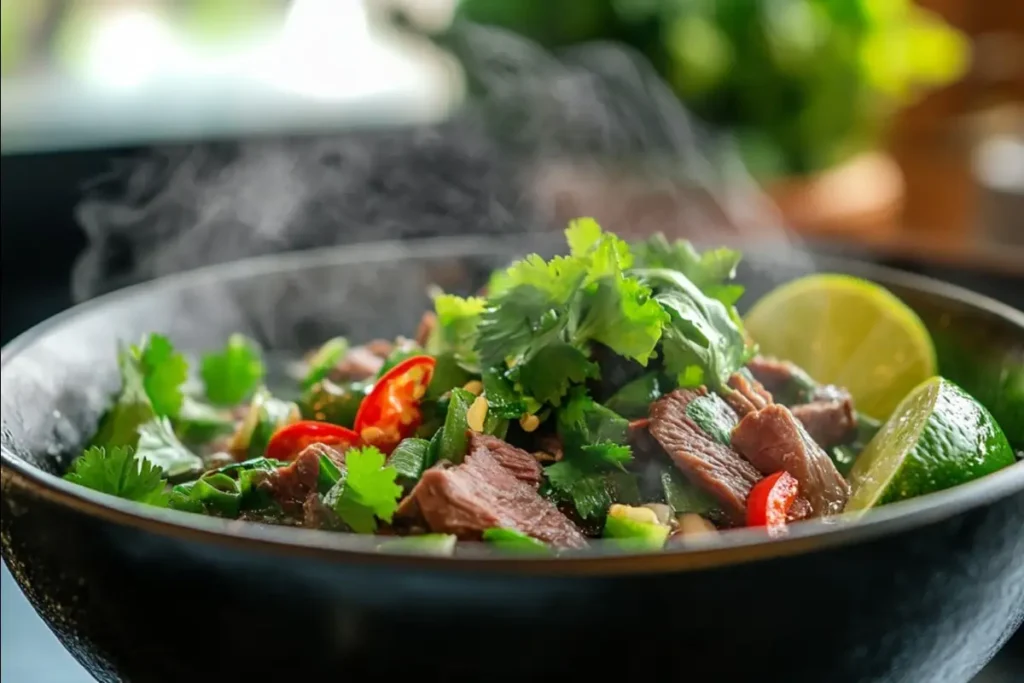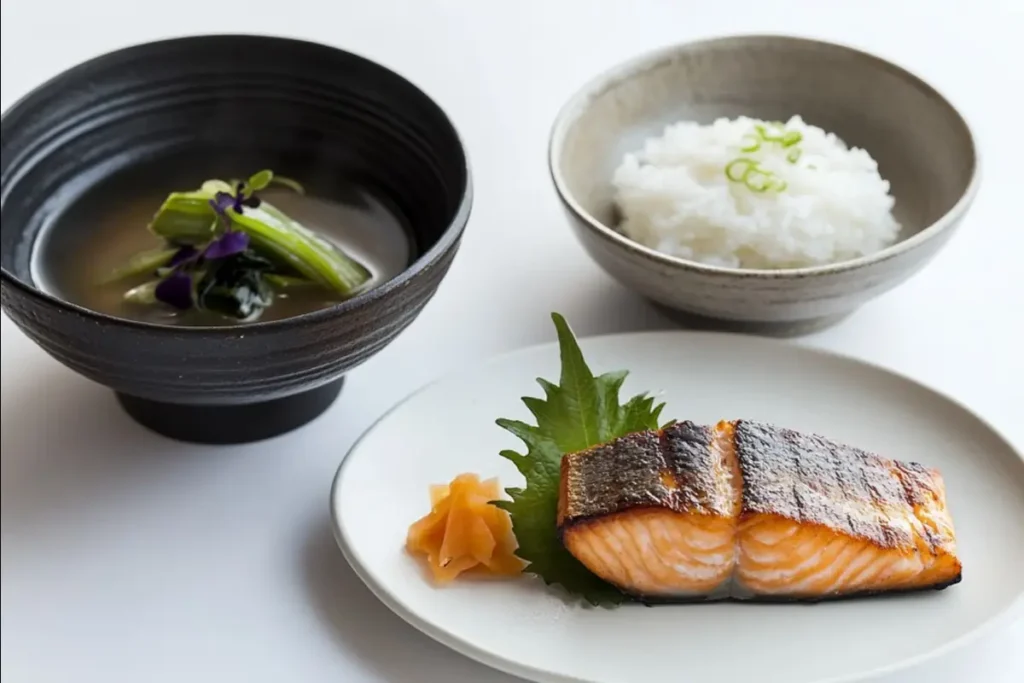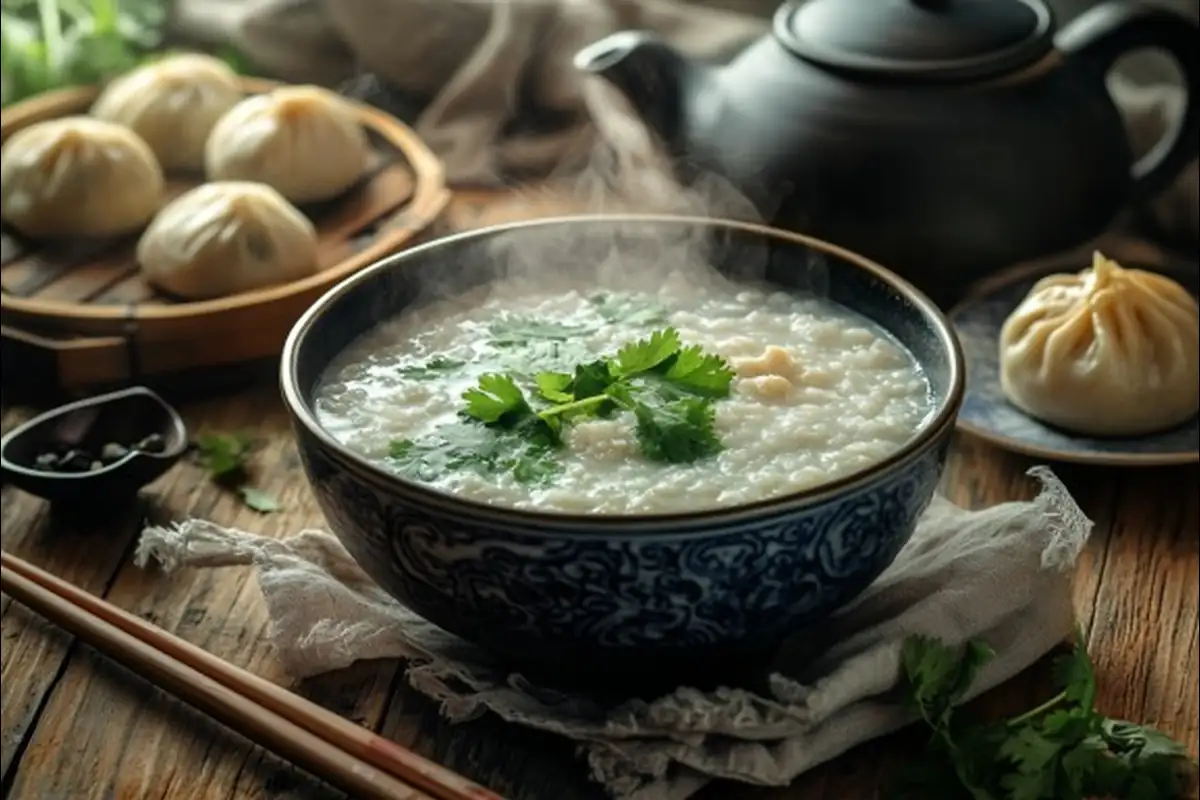Breakfast is often hailed as the most important meal of the day, and Asian breakfast takes this concept to a whole new level. Unlike the cereal-and-toast tradition common in Western cultures, an Asian breakfast is a delightful medley of flavors, textures, and cultural influences. From savory porridges to vibrant noodle dishes, the morning meal in Asia is as varied as the region itself. This article will take you on a flavorful journey, exploring traditional dishes, regional variations, easy recipes, and the health benefits of Asian breakfasts. Let’s dive in!
1: Introduction to Asian Breakfasts
What is an Asian Breakfast?
An Asian breakfast is more than just a meal; it’s an experience steeped in culture and tradition. Unlike the standard toast or eggs of Western breakfasts, many Asian cultures favor savory, hearty, and often umami-rich dishes. Staples like rice, noodles, and soups dominate the menu, offering a balance of carbohydrates, proteins, and vegetables to kickstart the day. Ingredients such as soy sauce, sesame oil, and ginger infuse these meals with unmistakable flavors.
Cultural Significance of Breakfast in Asia
Breakfast holds a unique place in Asian culture. It’s not just about fueling the body; it’s about connection—whether it’s a family gathering around a steaming pot of congee in China or grabbing a quick plate of dim sum in bustling Hong Kong. Many dishes reflect the agricultural roots of their regions, using fresh, local ingredients. Each meal is a celebration of culinary heritage, passed down through generations.
Why Explore Asian Breakfasts?
So, why should you delve into the world of Asian breakfasts? For starters, they’re incredibly versatile—there’s something for every palate. Want a comforting bowl of soup? Try Vietnamese pho. Craving something crispy? Jianbing, a Chinese crepe, has you covered. Beyond the variety, Asian breakfasts often emphasize wholesome ingredients, making them a nutritious choice. Exploring these dishes isn’t just a treat for your taste buds; it’s also a window into the vibrant cultures of Asia.
2: Top 10 Popular Asian Breakfast Dishes

1. Congee: Comforting Rice Porridge
Congee, or rice porridge, is a beloved breakfast staple across Asia. Often enjoyed with savory toppings like salted eggs, pickled vegetables, or shredded chicken, this dish offers a warm and hearty start to the day. Its versatility allows for endless variations, adapting to regional flavors and personal preferences.
2. Dim Sum: Bite-Sized Breakfast Treats
Dim sum, a Cantonese tradition, brings a delightful array of bite-sized treats. From steamed dumplings and buns to crispy spring rolls, this breakfast is as visually appealing as it is delicious. Pair it with tea for the perfect start to your morning.
3. Roti Canai: Malaysian Flatbread with Curry
A flaky, buttery flatbread served with a side of rich, aromatic curry, roti canai is a crowd favorite in Southeast Asia. Its crispy texture and spiced dipping sauce make it a flavorful breakfast option.
4. Japanese Breakfast Set: Rice, Miso Soup, and Grilled Fish
A Japanese breakfast set typically features steamed rice, miso soup, grilled fish, and various side dishes such as pickled vegetables and nori. This balanced meal highlights simplicity and nutritional value.
5. Vietnamese Pho: Aromatic Noodle Soup
Pho, the iconic Vietnamese noodle soup, is often enjoyed as a morning meal. Its fragrant broth, tender slices of beef or chicken, and fresh herbs make it a comforting and satisfying choice.
6. Indian Chole Bhature: Spiced Chickpeas with Fried Bread
Chole Bhature is a hearty North Indian dish consisting of spiced chickpeas served with fluffy, deep-fried bread. It’s a filling breakfast that packs a punch of flavor and is perfect for a leisurely weekend morning.
7. Filipino Silog: Garlic Fried Rice with Protein
Silog, a Filipino breakfast staple, combines garlic fried rice, eggs, and a protein like tapa (cured beef) or tocino (sweet pork). This quick and easy meal is a go-to for busy mornings.
8. Korean Gimbap: Seaweed Rice Rolls
Gimbap, often referred to as Korean sushi rolls, features rice and assorted fillings wrapped in seaweed. It’s a portable and convenient option for breakfast on the go.
9. Indonesian Bubur Ayam: Savory Chicken Porridge
Bubur Ayam, an Indonesian chicken porridge, is topped with fried shallots, peanuts, and a drizzle of soy sauce. Its creamy texture and bold flavors make it a comforting breakfast dish.
10. Chinese Jianbing: Crispy and Savory Crepe
Jianbing, a popular Chinese street food, is a crispy crepe filled with eggs, scallions, and savory sauces. It’s a perfect grab-and-go breakfast that’s both satisfying and flavorful.
3: The Regional Variations of Asian Breakfasts
East Asia (China, Japan, Korea)
East Asian breakfasts often emphasize balance and simplicity. In China, congee and steamed buns are staples. Japan offers a minimalist approach with miso soup and rice, while Korea features hearty soups and side dishes, collectively known as banchan.
Southeast Asia (Thailand, Malaysia, Vietnam)
Southeast Asian breakfasts are bold and vibrant. From Thailand’s sweet mango sticky rice to Vietnam’s savory pho and Malaysia’s nasi lemak (coconut rice with accompaniments), these dishes showcase the region’s love for intense flavors and fresh ingredients.
South Asia (India, Sri Lanka, Pakistan)
South Asian breakfasts are hearty and rich, often featuring spiced lentils, flatbreads, and savory porridges. Parathas stuffed with spiced potatoes and masala chai are popular choices in India, while Sri Lanka offers hoppers (fermented rice crepes) and dahl curry.
Internal Linking Opportunity
To learn more about the preparation of dishes like flatbreads and savory porridges, check out the Chicken Breakfast Recipes on WeDoRecipes. This complements our exploration of hearty Asian breakfasts.
4: Recipes You Can Try at Home
Easy Asian Breakfast Recipes for Beginners
If you’re new to preparing Asian breakfast dishes, starting with simple recipes is a great idea.
- Basic Congee Recipe: Simmer rice with water or broth until it reaches a creamy consistency. Add soy sauce, sesame oil, and toppings like scallions, fried shallots, or shredded chicken for flavor.
- Simple Dim Sum Dumplings: Use store-bought wonton wrappers, fill them with minced meat or vegetables, and steam them for a quick and satisfying treat.
Intermediate Recipes for the Food Enthusiast
For those ready to take their cooking skills up a notch, here are some intermediate recipes:
- Homemade Roti Canai: Prepare a stretchy dough, roll it thin, and fry until golden brown. Pair it with a homemade curry sauce for an authentic Malaysian breakfast.
- Vietnamese Banh Mi with Eggs: Fill a crispy baguette with fried eggs, pickled carrots, cucumbers, and a tangy sauce. This street-style sandwich is perfect for brunch.
Tips for Preparing Ingredients in Advance
Asian breakfasts often rely on fresh and flavorful ingredients. To save time, prepare your ingredients in advance:
- Chop vegetables and store them in airtight containers.
- Make dumpling fillings or curry bases and freeze them for later use.
- Use pre-cooked rice for dishes like fried rice or congee to speed up meal preparation.
For more delicious recipes, check out Chicken Breakfast Recipes, where you can explore creative ways to start your day with a flavorful twist.
5: The Health Aspects of Asian Breakfasts

Why Asian Breakfasts Are Nutritious
An Asian breakfast often emphasizes whole foods like rice, vegetables, and lean proteins. These meals are naturally balanced, providing a mix of carbohydrates, healthy fats, and essential nutrients. For example, congee is low in fat and easy to digest, making it ideal for a light yet energizing start to the day.
Healthiest Options to Consider
Some of the healthiest Asian breakfast options include:
- Vietnamese Pho: With its nutrient-rich broth, fresh herbs, and lean meat, pho is packed with vitamins and minerals.
- Japanese Breakfast Set: The combination of miso soup, fish, and rice offers a low-calorie and high-protein meal.
- Dim Sum Steamed Buns: Opt for steamed rather than fried dim sum to enjoy a lighter yet satisfying dish.
Customizing for Dietary Preferences
One of the best things about Asian breakfast dishes is their adaptability. Whether you’re vegetarian, gluten-free, or on a low-carb diet, you can tweak these recipes to fit your needs:
- Replace white rice with cauliflower rice for a low-carb congee.
- Use tofu or tempeh instead of meat in dishes like gimbap or pho.
- Try gluten-free flours for recipes like roti canai or pancakes.
For inspiration on crafting a healthy breakfast, explore the nutritional benefits of balanced meals on WeDoRecipes.
6: FAQs About Asian Breakfasts
What Is a Typical Asian Breakfast?
A typical Asian breakfast varies widely across regions but often includes staples like rice, noodles, or bread paired with vegetables, proteins, and flavorful condiments. For instance, Chinese breakfasts might feature congee or steamed buns, while a Japanese breakfast could include rice, miso soup, and grilled fish. These meals prioritize balance, with an emphasis on fresh, whole ingredients… learn more
What Is a Japanese Main Breakfast?
A traditional Japanese breakfast is all about simplicity and nutrition. The main components often include steamed rice, miso soup, a piece of grilled fish, and small side dishes such as pickled vegetables or tamagoyaki (rolled omelet). This meal is not only satisfying but also highlights the importance of balance and harmony in Japanese cuisine… learn more
What Is the Healthiest Chinese Breakfast?
One of the healthiest Chinese breakfast options is congee, a savory rice porridge. When topped with vegetables, lean proteins like chicken or fish, and seasoned with soy sauce or sesame oil, it becomes a nutrient-rich, low-fat meal that’s easy to digest. Alternatively, steamed buns filled with vegetables or lean meats are also healthy and filling… learn more
What Is a Traditional Breakfast?
A traditional breakfast in Asia reflects the local culture and resources of each region. For example:
In South Asia, it could be spiced lentils with flatbreads.
In Southeast Asia, dishes like nasi lemak (coconut rice with accompaniments) are common… learn more
7: Exploring the Culinary Techniques Behind Asian Breakfasts
Key Techniques in Asian Breakfast Preparation
The art of creating an Asian breakfast often revolves around simple yet effective culinary techniques that enhance natural flavors.
- Steaming: Steaming is a go-to method for dishes like dumplings, buns, and even rice-based breakfasts like idli in South India. This technique preserves nutrients and maintains the delicate textures that many Asian breakfasts are known for.
- Stir-Frying: A quick and efficient method, stir-frying is commonly used for fried rice, noodles, and vegetable sides. Its high heat locks in flavors and keeps ingredients vibrant.
- Slow Cooking: Comfort dishes like congee or soups, such as pho, often involve slow cooking to develop deep, rich flavors. This method ensures that ingredients meld together beautifully over time.
Ingredients That Define an Asian Breakfast
While the cooking techniques play a key role, the choice of ingredients is what sets an Asian breakfast apart.
- Rice: Whether steamed, fried, or transformed into porridge, rice is the backbone of many breakfasts.
- Soy Sauce and Sesame Oil: These staples add depth and aroma to even the simplest dishes.
- Fresh Herbs and Spices: Ingredients like cilantro, ginger, and garlic not only boost flavor but also provide health benefits.
The harmonious use of these techniques and ingredients is what makes Asian breakfasts so versatile and enjoyable.
8: How Asian Breakfasts Inspire Global Cuisine
The Global Influence of Asian Breakfasts
The flavors and techniques of Asian breakfasts have found their way into international kitchens, inspiring fusion dishes that blend East and West. For example, the popularity of bao buns and ramen in Western countries highlights how these traditional meals have become global staples. Even breakfast sandwiches now borrow flavors from dishes like banh mi.
Bringing Asian Breakfasts Into Everyday Life
Incorporating Asian breakfast elements into your daily meals is easier than you might think. Start with small steps:
- Swap toast for a steamed bun or flatbread.
- Add a touch of soy sauce and sesame oil to your scrambled eggs for a savory twist.
- Experiment with making a simple congee or miso soup as a light breakfast option.
By embracing these flavors, you’re not only broadening your palate but also bringing a piece of Asia into your home.
9: Conclusion
Celebrating the Diversity of Asian Breakfasts
Breakfast is a universal way to begin the day, but Asian breakfasts stand out for their diversity, depth of flavor, and cultural significance. From the comforting bowls of congee to the vibrant plates of nasi lemak, these dishes are as varied as the regions they come from. They not only nourish the body but also tell stories of tradition, family, and creativity.
Incorporating Asian Breakfasts Into Your Routine
Whether you’re an adventurous foodie or just seeking healthier breakfast options, Asian breakfasts are worth exploring. Their emphasis on fresh ingredients, balanced flavors, and satisfying textures makes them a delightful addition to your morning routine. Start simple with congee or experiment with recipes like gimbap or roti canai to bring a touch of Asia to your table.
Embrace the vibrant world of Asian breakfast, and let it inspire your mornings with its unique blend of tradition and flavor.


2 thoughts on “Exploring the Diversity of Asian Breakfasts”